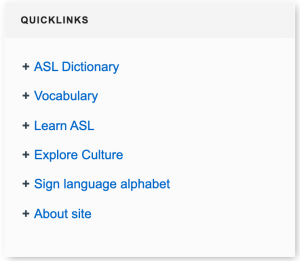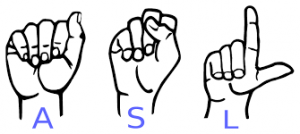Hey everyone! This is the final blogpost of my free inquiry project on the use of American Sign Language (ASL) in elementary classrooms. Throughout the semester, I have had the opportunity to explore a multitude of resources that teachers can use to learn and teach ASL to students. I begin the semester by reviewing some basic ASL terminology for my own understanding and from there began to explore other areas. Two-subject areas that are great to implement ASL are Language Arts and Mathematics. Integrating ASL into other subjects is a valuable way for students to learn vocabulary in an authentic way. ASL like any language is best taught when students are young as it helps with overall brain development. As educators, it is our duty to support all students in their academic journey. Through this project, I have grown to understand that only the benefits of using ASL for deaf students, but the profound impacts it can have on all students.
My favourite part of this project was researching the possible signs that teachers can use in the classrooms. It puts a practical use of the signs into action. There are so many endless possibilities but here are a few from my previous blogs to help you out!
- Greetings → Hello, welcome, goodbye
- Questions → Who, what, where, when, why
- Colours → Blue, Green, Purple, Yellow
- Appreciation → thank you, clapping, cheers
- Math → Add, Subtract, Divide, Multiply
That concludes my ASL free inquiry project for the year! I hope everyone learned a little bit more about the benefits of using sign language in the classroom. I leave you with this inspirational video of a woman signing the song “This Is Me” from the hit movie “The Greatest Showman”.
– Ms. G 🙂




